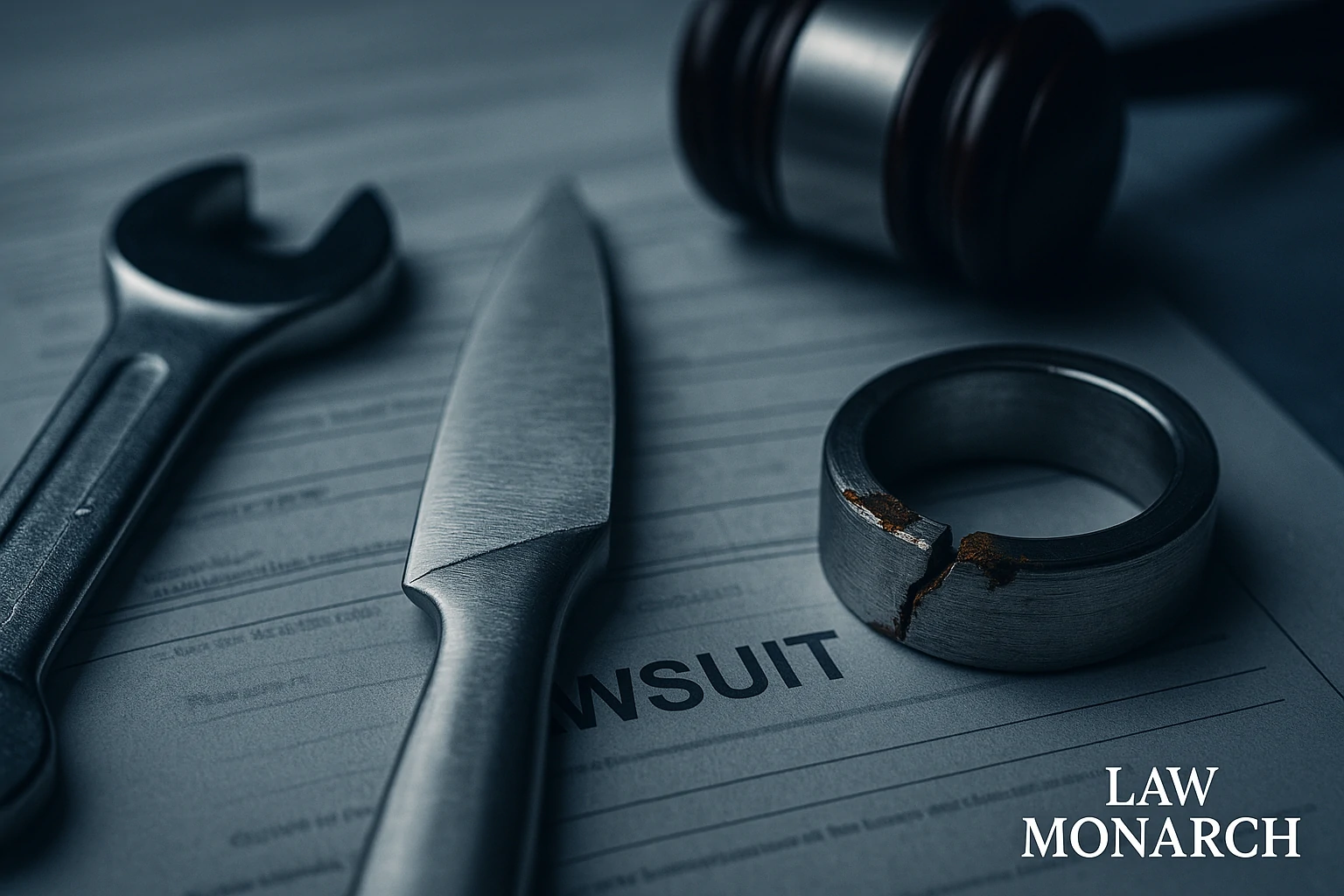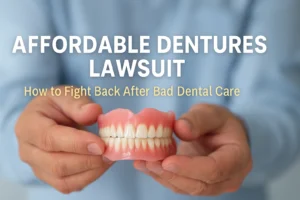Stainless steel is part of everyday life. You see it in homes, restaurants, hospitals, and factories. It looks clean, resists rust, and promises long use. People trust stainless steel for safety, strength, and value.
Material Inox became a known name in this field. It sold stainless steel products for many uses. Buyers included homeowners, builders, chefs, and manufacturers. The brand claimed high quality. Many trusted it. But some later faced big problems.
Over time, customers started to complain. They said the products failed early. Some found rust, cracks, or weak parts. Others said the steel was not as strong as promised. These claims turned into lawsuits. Courts got involved. News spread fast.
Now, people want to know more. What happened with Material Inox? Were the products really bad? What do the lawsuits say? This article explains everything in clear words. If you use stainless steel, this may affect you.
What Is Material Inox?
Material Inox is a company that sells stainless steel. It offers sheets, pipes, tools, and other metal parts. Its items serve homes, kitchens, labs, and factories. The brand says its steel is strong, durable, and made with care.
Many people chose Material Inox because of its shine and promise. Stainless steel should resist stains, heat, and wear. The company used grade labels like “304” and “316.” These grades show how much nickel or chromium the steel has. Higher grades mean better quality. Or so buyers thought.
The lawsuits claim something else. Some users say the steel did not match its label. Others say it broke too soon or rusted in weeks. These problems caused harm, waste, or even danger.
What Went Wrong with the Steel?
Customers filed legal claims for many reasons. One key issue was product quality. Buyers said they found problems that should not happen in good stainless steel.
Some people saw cracks along the surface. Others found rust spots near joints or welds. Some tools bent or snapped during normal use. These signs made buyers question the strength of the metal.
Another issue was the labeling. Lawsuits say some products used wrong grade numbers. A product marked as food-safe turned out to rust or corrode near food. This caused fear and health risks. Users expected stainless steel to stay clean and safe, especially in kitchens or medical areas.
False advertising became another problem. People say the company promised high quality but sold lower-grade steel. Ads claimed long life, top-grade finish, and strong resistance. Buyers believed those words. But some products failed soon after use.
Safety warnings were also missing in many cases. Certain steel types need special care. If a product rusts easily or must stay dry, the label should say so. Many users claim they never got such notice. They used the product as normal and faced unexpected damage.
Who Filed Legal Action Against Material Inox?
The lawsuits came from many types of users. Small business owners claimed losses. Restaurants and cafes said their tools rusted too fast. Contractors said steel parts failed in buildings. Some families said kitchen items corroded near food.
Each case told a different story, but the root problem stayed the same. Buyers felt misled. They paid for quality but received poor results. They wanted justice, repairs, or refunds.
Some claimed harm to their health. Others lost money from failed tools or parts. Few cases involved workplace accidents due to broken steel.
What Are the Lawsuits Asking For?
These lawsuits are not just about money. Many demand change. Buyers want refunds or replacement parts. Others want the company to stop selling bad products. Some demand public warnings.
In several claims, people ask the court to fine Material Inox. They say the company should not be allowed to lie in ads or hide steel flaws. If courts agree, this could lead to big changes in how the company works.
Some lawsuits ask for medical costs. If a tool made with bad steel caused a cut or illness, the user may ask for treatment money. Others seek coverage for lost business or repairs.
How Did the Company Respond?
Material Inox responded in several ways. In public statements, the company said most products pass all tests. It blamed some failures on misuse. In some cases, it offered returns or refunds.
The company also said it follows local and international steel standards. It claimed that many buyers used the products the wrong way. It said labels do show the right grade and safety notes.
In court, Material Inox pushed back. It hired legal teams to fight the claims. It said the lawsuits had weak proof or no harm. This legal fight is still active in some states.
Some judges ruled in favor of buyers. Others sided with the company. The results depend on where and how the case was filed. No class-action suit has won yet, but that could change if more people join.
Impact on Buyers and Sellers
These lawsuits caused worry in the market. Buyers now check steel labels more closely. Some stores stopped selling Material Inox. Others added warning signs or refund offers.
Contractors and business owners must stay careful. If they install a product that fails later, they may face legal risks too. A broken steel part in a restaurant or lab can cause big losses.
Families who bought tools or parts also face costs. A rusted kitchen sink or broken blade can harm health or cause leaks. This brings new attention to steel safety in daily use.
Sellers also feel pressure. They must prove their items come from safe, known sources. They may now ask for steel test reports or cleaner records before stocking a product.
What To Do If You Own These Products
If you have a Material Inox item in your home or workplace, check it well. Look for rust, stains, or weak spots. If something seems wrong, stop using it.
You can contact the company and ask for help. Show your receipt, photos, and the product label. Keep all proof safe. If you suffered damage or loss, speak to a lawyer. They may guide you about your rights.
Do not throw the item away if it shows a defect. It may serve as evidence in a legal case. Some law firms collect faulty products for review. You may also join a group case if more buyers speak up.
How to Avoid Poor Steel Products in the Future
Not all steel is the same. Some sellers use fancy names to cover weak material. You must stay smart when buying.
Always ask for steel grade in writing. Look for known certifications. If a deal seems too cheap, it may hide low quality. Read reviews before buying tools, kitchen parts, or building supplies.
If you run a shop or business, use trusted suppliers. Ask for lab tests if needed. Protect your brand and customers. A small mistake with steel can lead to big losses.
Could These Lawsuits Bring Change?
Yes. Big lawsuits often push legal reforms. If courts find real problems in Material Inox products, lawmakers may act. New rules could require better testing, honest ads, and safer labels.
Groups that set steel standards may update their checks. Companies may face audits. Some may change how they list steel grades online or in stores.
Buyers and sellers may also see clearer return rules or stronger buyer rights. All of this depends on the final court results.
Conclusion
Material Inox lawsuits show how trust can break. Buyers expected strong, safe, and long-lasting steel. Instead, they found weak, rusty, or mislabeled parts.
This story is not just about one company. It warns all users to stay alert. Always know what you buy. Always check if it meets the promise. Your safety, money, and time matter.
If a product fails, speak up. If a company cheats, the law should respond. Together, we keep the market fair, safe, and honest.
Steel should be solid, not risky. The truth must be clear, not hidden in ads. These lawsuits may be just the start of something bigger.
This article is for general information only. It does not offer legal advice or make claims about any company. If you have a legal issue or believe you were harmed, speak with a licensed attorney in your area. We do not represent any party involved in the Material Inox lawsuits.




